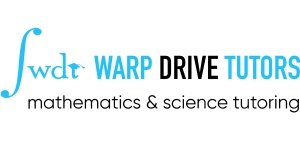SAT® Math
You will work with one of our math teacher-tutors who is responsible for overseeing the entire ACT/SAT Math prep at their school, which sends many students to Ivy League and top tier universities as mathematics, engineering or physics majors.
When the test was originally created, the letters in “SAT” stood for “Scholastic Aptitude Test.” The test was meant to measure a person’s aptitude (their “natural” academic ability or talent). This acronym was eventually dropped because it is not accurate. The math section of the SAT is not an aptitude test. It is a content test. All students can raise their SAT score through study, practice, and preparation. The amount of score growth students achieve is strongly correlated with the quantity and quality of their preparation.
We provide one-on-one, individualized SAT math preparation to help each student achieve their SAT score goal. Our effective, high-quality SAT preparation program focuses on four core areas:
- Content Review
Researchers and educators often claim that the best SAT preparation happens every day during a student’s math class. This is because strong content knowledge in the areas of Algebra I, Algebra II, Data/Statistics, and Geometry/Trigonometry is critical to a student’s success on the SAT. At Warp Drive Tutors, our tutors follow a core curriculum designed to review the content that students need to know on the SAT. As we work with a student, we tailor this curriculum to the student’s individual needs.
- Modeling and Applications
In addition to reviewing content knowledge, students need to develop the skill of applying their knowledge to real-world scenarios. These problems may ask a student to develop a linear model to describe the cost to rent a car or to develop an exponential model to describe the amount of money in a bank account. The curriculum we follow enables our students to develop, use and interpret mathematical models that connect their content knowledge to any real-world scenarios that might come up on the SAT.
- Test Familiarity and Pacing
Everything about the math portion of the SAT is predictable, whether it is the number of questions, the style of questions, the distribution of questions from each content area. Students gain familiarity with the predictable nature of the test by taking numerous full-length practice tests under test-taking conditions. After each test, students review their responses with their individual tutor. After each practice test, tutors work with each student one-on-one on each of the following:
- Tracking student progress towards their score goal
- Addressing content-area gaps (if any) – it is particularly beneficial to review this material with an actual math teacher!
- Pacing (spending the optimal amount of time on each problem)
- Test-Taking Strategies
Students and their tutors spend most of their time on the items listed above (content review, modeling/applications, and test familiarity). However, there are a few test-taking strategies that tutors will practice with students.
The majority of questions on the math portion of the SAT are multiple choice (45 out of 58). Multiple choice questions have a fundamental weakness: the answer has been given to students (they just have to find it). Tutors will present a set of strategies used by high-scoring students to eliminate incorrect answers and identify the correct answer on multiple choice questions.
Finally, 38 out of 58 questions on the SAT allow students to use calculators. Tutors will work with each student to strengthen the student’s calculator skills (and also help the student to identify which problems would benefit from the use of a calculator).
We would be delighted to speak with you and answer any questions you may have!
AP®, Advanced Placement®, College Board® and SAT® are trademarks registered by the College Board, which is not affiliated with, and does not endorse, this product.
